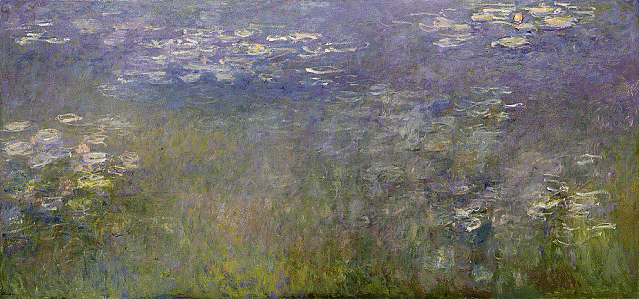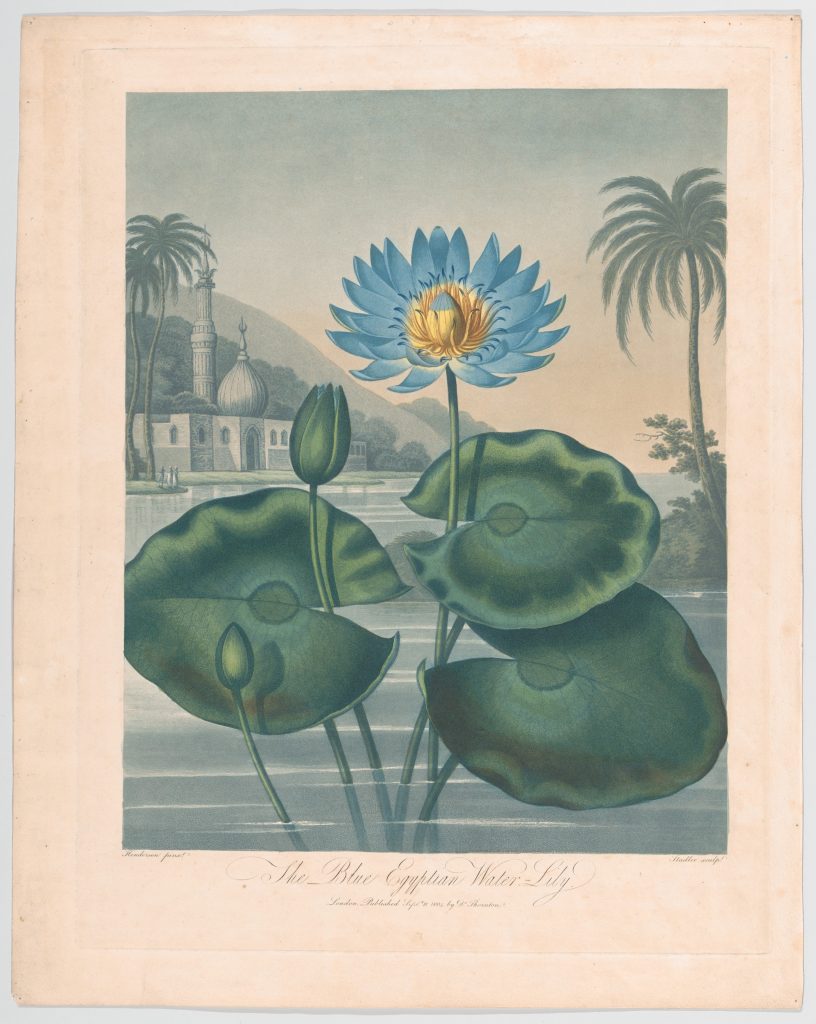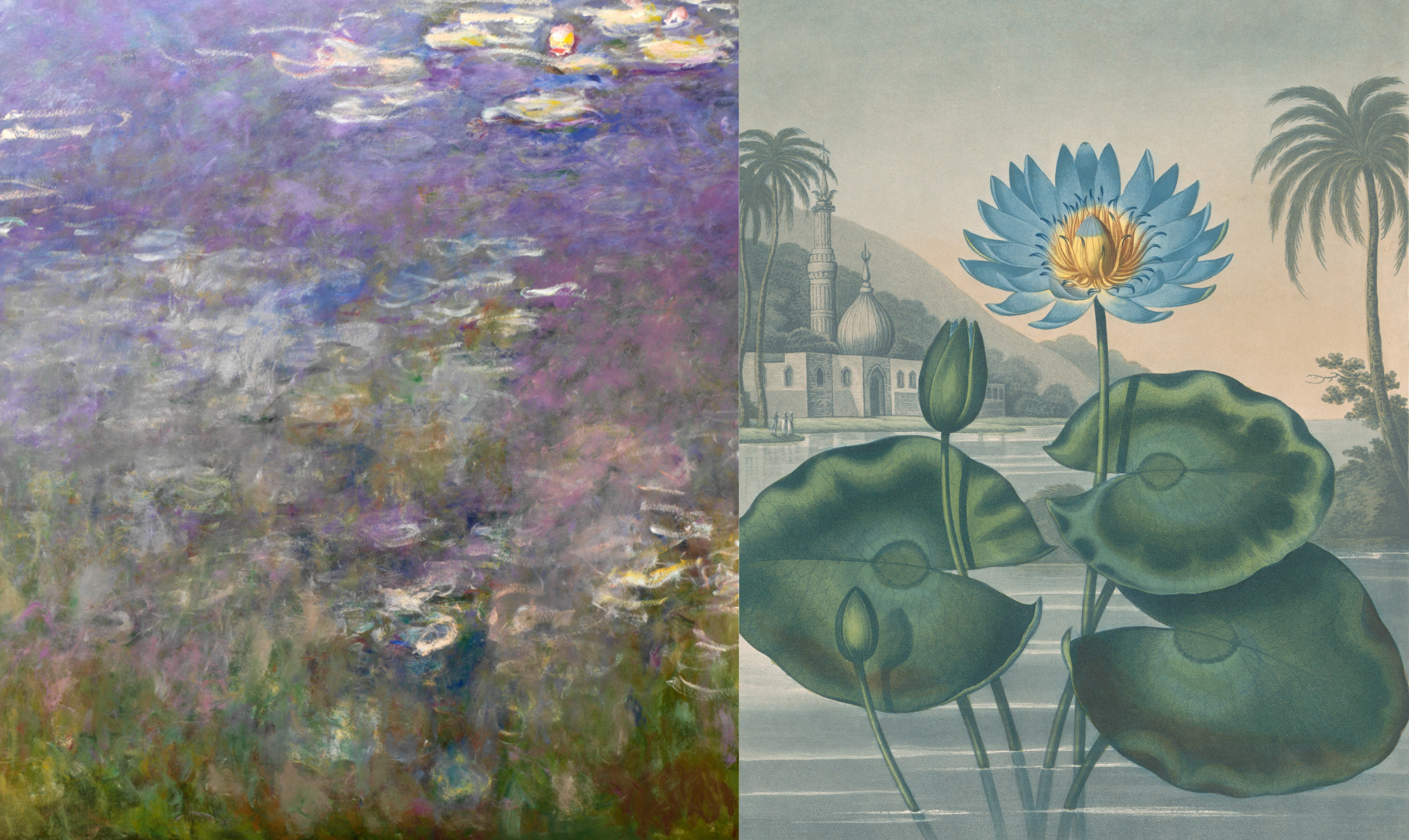Monet in Conversation
Claude Monet (1840-1926), the luminary of French Impressionism, lent the movement its name with his painting Impression Sunrise (Musée Marmottan, Monet, Paris), which debuted in Paris at the inaugural 1874 exhibition of Impressionist artists. Uniting its practitioners through his innovative approach as one of the first artists to practice painting ‘en plein air’ (outside), he was obsessed with capturing nature’s changing elements such as natural light, and atmosphere. Monet elevated this technique by painting in series, exemplified by the museum’s beloved Water Lilies, which records the subject at different times of the day.
This ongoing focus exhibition series, “Monet in Conversation,” delves into Monet’s dual role as influencer and influenced. This iteration focuses on the theme of Monet’s Garden and the Secret Language of Flowers. These artistic “conversations” that will change annually, will unfold as a visual dialogue, illuminating the reciprocal influence between Monet and fellow artists, or subjects, encapsulating the essence of transformative artistic exchange.
Monet’s Garden and The Secret Language of Flowers
Step into the secret world of flowers, where nature’s beauty and art’s expression intertwine in a garden that inspired endless creativity. This exhibition, part of the “Monet in Conversation” series, offers a rare dialogue between Monet’s beloved Waterlilies painting, and historic botanical prints that explore the hidden language of flowers across time. For Monet, his garden at Giverny was both a sanctuary of restorative solace and a living creation—what he called his “most beautiful masterpiece” and at times, “a fury of horticulture.”
His fascination with cultivating blooms from around the world transformed his art into a celebration of flowers’ deeper meanings—beauty, devotion, resilience, and the passage of time. Flowers, for Monet and countless cultures, speak a language beyond words, each bloom a symbol with its own story to tell.
Discover how Monet’s obsession with gardening and his passion for flowers reflect a universal connection to nature’s power to heal, inspire, and express the inexpressible.
Organized by The Nelson-Atkins Museum of Art. This exhibition is generously supported by the G. Kenneth and Ann Baum Philanthropic Fund.


